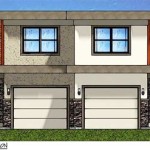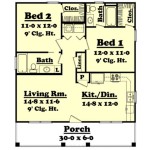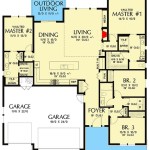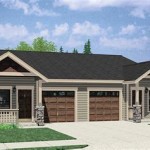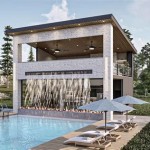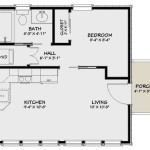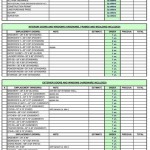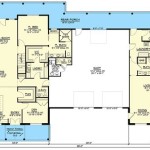House Plans With Barn Attached: Integrating Functionality and Aesthetics
The architectural concept of attaching a barn to a house offers a unique blend of rustic charm and practical convenience. House plans featuring this design element cater to a variety of needs, from providing ample storage and workspace to creating a visually striking and integrated living environment. This article explores the key features, benefits, and design considerations associated with house plans incorporating an attached barn.
The concept of attaching a barn to a house is not entirely new, rooted in historical precedents where farmers sought to streamline daily tasks and minimize exposure to the elements. Combining living and working spaces under one roof or connected structures provided efficiency and safety, especially during harsh weather conditions. Today, the appeal extends beyond purely functional considerations, encompassing a desire for a connection to rural aesthetics, sustainable living, and versatile space utilization.
Modern interpretations of house plans with attached barns demonstrate considerable architectural diversity. These designs range from carefully restored historical structures to newly constructed buildings that emulate the barn aesthetic while incorporating contemporary amenities and design principles. The style can vary significantly, spanning from traditional farmhouse designs to modern, minimalist interpretations. The key element remains the seamless integration between the residential space and the adjacent barn structure, forming a cohesive and functional property.
Key Benefits of House Plans With Attached Barns
The decision to invest in a house plan with an attached barn is often driven by a combination of practical and aesthetic considerations. The integration of living and working spaces offers several distinct advantages that can enhance lifestyle and property value.
One of the most significant benefits is the enhanced accessibility and convenience. An attached barn eliminates the need to travel outdoors to access storage, workshop, or animal housing areas. This is particularly advantageous during inclement weather, allowing for efficient management of tasks without exposure to the elements. For individuals involved in hobbies like woodworking, crafting, or automotive repair, the attached barn provides a dedicated workspace directly connected to the living area.
Another key advantage is the enhanced potential for multi-functional use of the barn space. Depending on the specific design and intended purpose, the barn can serve various functions, including storage for vehicles, equipment, or recreational items. It can also be adapted as a workshop, studio, or even a small business space, depending on local zoning regulations. The flexibility of the barn space allows homeowners to tailor the structure to their specific needs and interests, maximizing the overall utility of the property.
Furthermore, house plans with attached barns can offer significant potential for increased property value. The unique architectural design and functional benefits of the attached barn concept often appeal to a specific segment of the real estate market. Potential buyers who value the rustic aesthetic, require ample storage or workspace, or appreciate the convenience of integrated living and working spaces are likely to find these types of properties particularly attractive. When properly designed and maintained, a house with an attached barn can represent a valuable and desirable real estate asset.
Design Considerations for House Plans With Attached Barns
Creating a successful house plan with an attached barn requires careful attention to a variety of design considerations. These include architectural style, material selection, structural integrity, and integration with the surrounding landscape. The ultimate goal is to create a cohesive and functional design that meets the needs of the homeowner while complementing the overall aesthetic of the property.
One of the primary design considerations is the architectural style of both the house and the barn. The design should create a visual harmony between the two structures, ensuring that they complement each other rather than appearing as disparate elements. This can be achieved through the consistent use of materials, colors, and architectural details. For example, a traditional farmhouse design may feature wood siding, a gable roof, and rustic hardware, while a more modern design may incorporate metal siding, a flat roof, and minimalist detailing. The key is to create a cohesive design that reflects the overall aesthetic of the property.
Material selection is another critical design consideration. The materials used for the house and the barn should be durable, weather-resistant, and aesthetically pleasing. Common materials for barn construction include wood framing, metal siding, and concrete foundations. The choice of materials will depend on factors such as budget, local climate, and desired aesthetic. Careful consideration should be given to the environmental impact of the materials, with a preference for sustainable and locally sourced options whenever possible.
Structural integrity is paramount when designing a house plan with an attached barn. The barn structure must be able to withstand the weight of the roof, walls, and any stored items. Proper engineering and construction techniques are essential to ensure the safety and stability of the building. In areas prone to high winds, earthquakes, or heavy snowfall, additional structural reinforcement may be necessary. It is important to consult with a qualified structural engineer to ensure that the design meets all applicable building codes and safety standards.
Integration with the surrounding landscape is also an important design consideration. The house and barn should be situated on the property in a way that maximizes natural light, ventilation, and views. The placement of the buildings should also take into account the existing topography, vegetation, and drainage patterns. Landscaping can be used to further integrate the house and barn with the surrounding environment, creating a seamless transition between the built and natural spaces.
Essential Features in House Plans With Attached Barns
House plans with attached barns can incorporate a variety of essential features that enhance functionality and comfort. These features may include specialized storage areas, workshop spaces, animal housing, and living areas, all seamlessly integrated into the overall design.
Specialized storage areas are a common feature in house plans with attached barns. These areas can be used to store vehicles, equipment, tools, and other items that would not typically be stored in a residential setting. Storage areas may include enclosed garages, open-sided sheds, or specialized storage racks and shelves. The design of the storage areas should be tailored to the specific needs of the homeowner, taking into account the size and type of items to be stored. Proper ventilation and moisture control are essential to prevent damage to stored items.
Workshop spaces are another popular feature in house plans with attached barns. These spaces can be used for a variety of hobbies and activities, such as woodworking, metalworking, automotive repair, or crafting. Workshop spaces should be well-lit, well-ventilated, and equipped with the necessary tools and equipment. The design of the workshop should take into account the specific needs of the user, including the type of work to be performed, the amount of space required, and the need for specialized equipment. Safety considerations are paramount, with proper grounding, fire suppression systems, and designated work areas.
Animal housing is a common feature in house plans with attached barns, particularly for homeowners who raise livestock or keep horses. Animal housing areas should be designed to provide a safe, comfortable, and sanitary environment for the animals. The design should take into account the specific needs of the animals, including the amount of space required, the type of bedding material, and the need for ventilation and drainage. Proper waste management systems are essential to prevent odors and maintain a clean environment. Animal housing areas should be separated from the living areas of the house to minimize noise and odor.
Living areas can also be integrated into house plans with attached barns. These areas may include guest suites, recreational rooms, or home offices. The design of the living areas should be consistent with the overall aesthetic of the house, while also providing a comfortable and functional space for residents or guests. Living areas may be located within the barn structure itself, or they may be integrated into the main house using connecting hallways or covered walkways. The possibilities are diverse, allowing homeowners to customize the design to suit their individual needs and preferences.
Integrating a house and barn structure presents unique challenges and opportunities in the realm of architectural design. Successfully executed, these plans can provide a harmonious blend of functionality and aesthetics, creating a truly unique and valuable property. Careful planning, attention to detail, and collaboration with experienced professionals are essential to achieving a successful outcome.

Modern Barn House Floor Plan With Open Living Area

Plan 275002cmm Modern Farmhouse With Barn Like Garage Bonus Above 4744 Sq Ft

Trending Barn House Plans Houseplans Blog Com

41877 1l Family Home Plans Blog
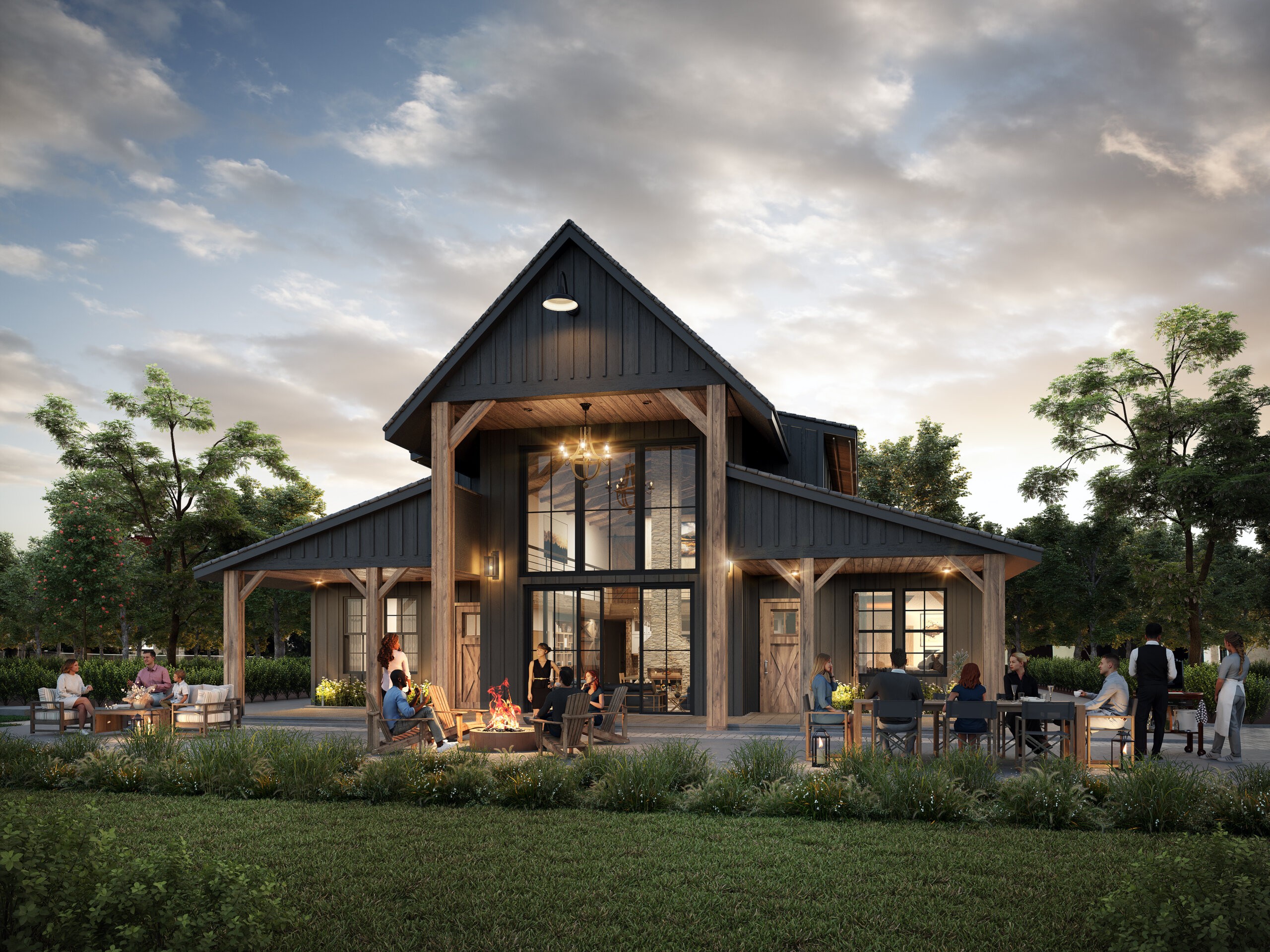
Natural Freedom House Plan Beautiful Besting Barn Mb 3247

Plan 41844 Barndominium House With Attached Building

Modern Farmhouse Barndominium Plan With Tall Ceilings And Oversized Patio Billings

Barnstable Barn Style House Plans New Luxury

Barndominium Plans Barn House Barndo Styles

Barn Style Home 4 Bdrm 3 Bath 2875 Sq Ft Plan 132 1656

